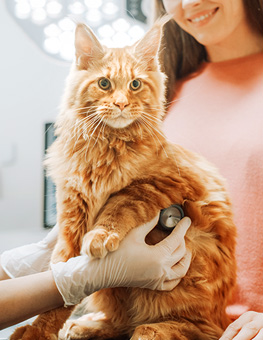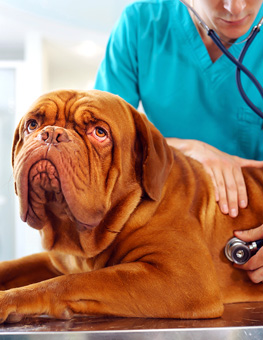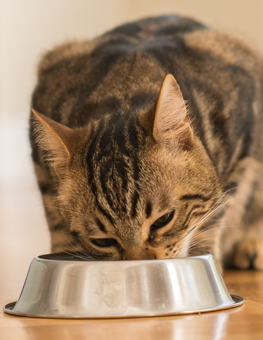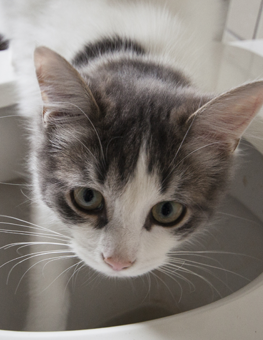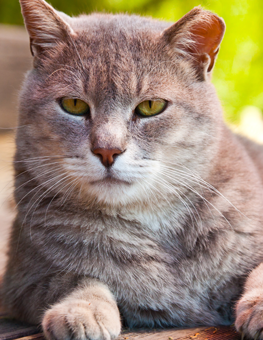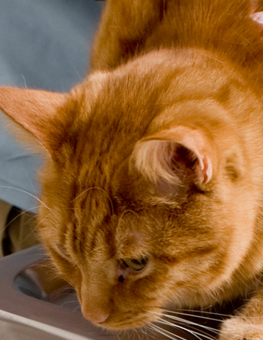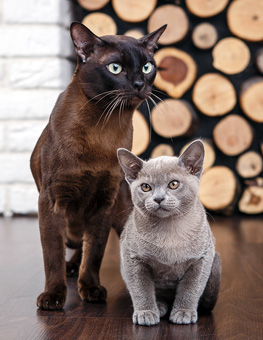Cat Kidney Disease
Detecting diabetes symptoms in your cat is essential to their health and quality of life.
Cat kidney disease is a common and serious condition prevalent in older cats, though it can affect cats of all ages. Cat kidney disease, also known as renal disease, occurs when the kidneys lose their ability to function effectively and carry out their vital roles. This can be a gradual process (chronic kidney disease) or a sudden occurrence (acute kidney failure). Chronic kidney disease (CKD) is the most common type of kidney disease affecting cats and involves the loss of kidney function over time. The kidneys play a crucial role in filtering waste from the blood and in making urine. When these vital organs fail, it can lead to a large quantity of health issues.
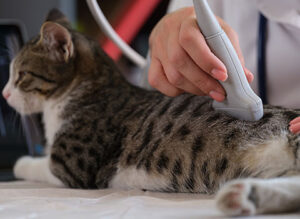
Ultrasound exams are one of many ways in which your Vet can check your cat for kidney health. Regular veterinary exams are essential!
What are the Symptoms of Cat Kidney Disease?
Early signs of cat kidney disease can be subtle and easy to miss. Especially as your cat ages, it will be essential to keep a close watch for any changes in their behavior or health. Common symptoms of kidney disease in cats include:
- Increased thirst and urination
- Loss of appetite
- Weight loss
- Vomiting
- Lethargy
- Bad breath
- Poor coat condition
- Hypertension
What are the Symptoms of Cat Kidney Failure?
As the disease progresses, the symptoms of cat kidney disease can become more pronounced and severe, including:
- Extreme weight loss
- Dehydration
- Mouth ulcers
- Blood in urine
- Severe lethargy
- Seizures
Recognizing these signs of cat kidney disease and cat kidney failure early can make a significant difference in managing the disease and improving your cat’s quality of life.
What are the Stages of Cat Kidney Failure?
Cat kidney failure progresses through four different stages, with stage IV meaning the cat is near the end of their life. Your veterinarian will be able to tell you what stage of the disease your cat is currently in:
- Stage I: Cats may be asymptomatic with minor changes evident in bloodwork.
- Stage II: Mild kidney failure with some clinical signs.
- Stage III: Moderate kidney failure with evident symptoms. Cats may begin to feel ill at this stage.
- Stage IV: Severe kidney failure, where the kidneys have lost most of their function. The cat is in crisis.
What is the Treatment for Cat Kidney Disease?
While there is no cure for chronic kidney disease, there are treatments available to manage the condition and improve your cat's quality of life. These treatment options include:
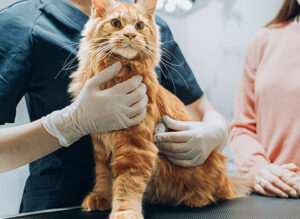
If your kitty is having kidney issues, your vet can present you with a wide array of treatment options.
- Fluid Therapy: Subcutaneous fluids may help to combat dehydration and support kidney function.
- Medications: Prescription medications are available to manage symptoms like high blood pressure and nausea, treat infections, and manage pain.
- Modifying diet: Specialized cat kidney food that is low in phosphorus and high in protein will likely be prescribed by your vet and can slow progression of the disease.
- Supplements: Potassium or phosphate binders may address imbalances caused by kidney failure.
- Surgical intervention: If your cat develops kidney stones, they may require surgery to remove the obstructive cat kidney stones.
Maintaining Cat Kidney Health
One of the best things you can do for your cat is to take them to the vet regularly for checkups. Early detection is key when it comes to maintaining your cat’s kidney health. Regular veterinary check-ups, particularly for older cats, can help identify kidney issues early.
Cat kidney disease is a serious, but manageable condition. By recognizing the symptoms and understanding the stages of cat kidney failure, you can seek timely treatment and make necessary adjustments to support your cat's health. With proper care, many cats with kidney disease can lead comfortable and fulfilling lives. Always consult with your veterinarian to determine the best course of action tailored to your cat’s specific needs.

